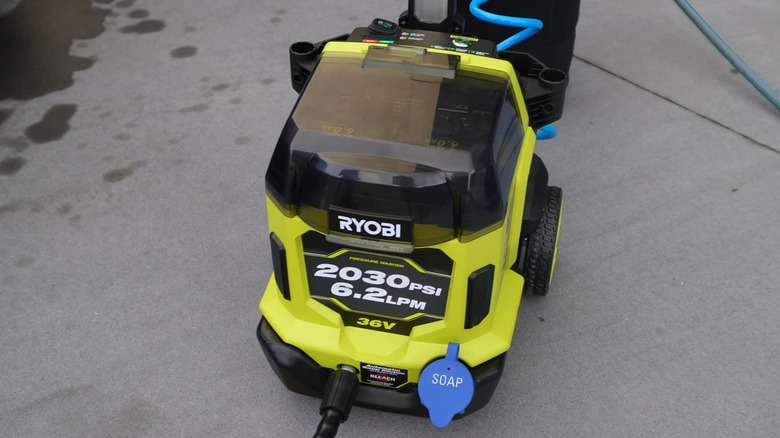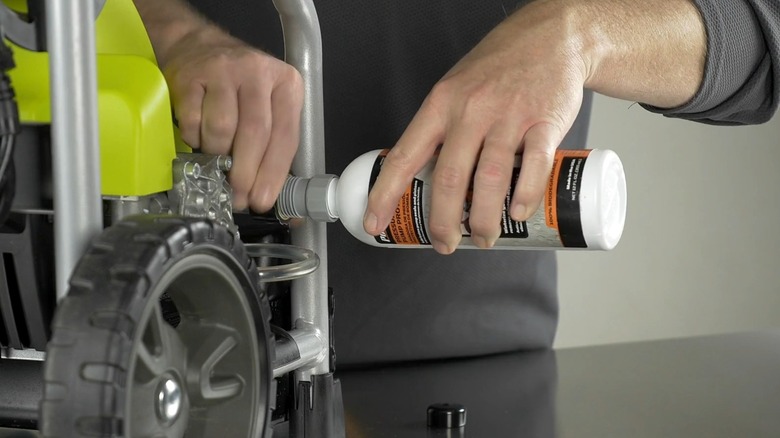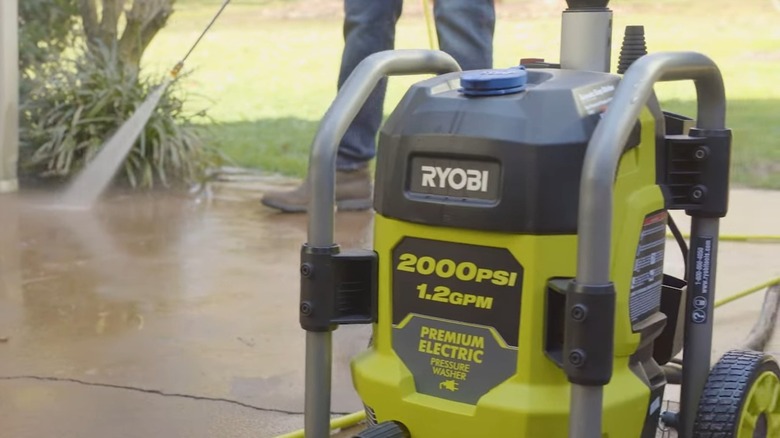How To Winterize Your Ryobi Pressure Washer (And Why You Should)
Ryobi has quite an impressive and varied catalog at this point, equipping buyers with whatever's needed to finish projects with ease. It's true that the brand has retired some products over the years, including some Ryobi tools we wish were never discontinued, but these discontinuations have done little to shrink its overall output. Ryobi has lawnmowers, power drills, nailers, and more for sale, which is why the name is so popular with and trusted by at-home DIYers and laborers alike. It even dabbles in cleaning with a strong lineup of pressure washers that are fit to wipe away any mess.
Looking over Ryobi's pressure washer options, there are a lot of differences between them to keep in mind when buying. There are different PSI levels, sizes, and, of course, price points, though regardless of which model you ultimately choose, you're gonna spend a fair chunk of change. Therefore, you want to take care of your pressure washer to get as much out of it as possible. It's in your best interest to clean and maintain your Ryobi pressure washer, use it per the provided instructions, and if you live somewhere prone to chilly winters, winterize it every season. If you've never winterized a Ryobi pressure washer or simply need a refresher, here's how you can go about getting this easy maintenance task done and why you should.
Pressure washer winterizing can get done in no time
The biggest reason to winterize a pressure washer is to prevent it from sustaining damage due to cold weather. The freezing and thawing of leftover water within the pressure washer pump can result in internal breakage in short order, typically resulting in loss of performance or failure to work at all. To ensure cracking doesn't happen, all you need is a bottle of pressure pump protector and some time to let it work its magic.
1. Power down and disconnect the power from your pressure washer.
2. With the bottle unsealed, connect your chosen pressure pump protector to the pressure pump's hose inlet. Make a note of the outlet's location.
3. Squeeze the bottle so that the protective solution runs through the inlet and outlet.
4. Remove the bottle from the outlet.
Just like that, your pressure washer is in good shape for winter, and its pump is protected from the harshness of the cold. Still, there are a few additional steps you can take before packing it up until springtime if you want to be extra thorough.
Additional winterization steps worth taking
Overall, the pump is the main component you want to make sure is winterized on your Ryobi pressure washer. Without it in working order, there's not much to get out of the entire unit. At the same time, it's not a bad idea to look elsewhere on the pressure washer and treat potentially endangered components for the winter. Start with the hose that attaches to the pressure washer. You want to ensure it is free of water before wrapping it up and storing it; otherwise, it could suffer splitting due to freezing and thawing. Double-checking the attached wand (if your specific unit has one) is important too.
Holding the handle down on the wand to release any residual water and pressure will go a long way in preventing temperature-related damage. You should also remove and store the pressure washer wand's nozzle as well since leaving it on over the course of the winter can cause warping and distort its spray pattern the next time you decide to use it. Finally, it's for the best to clear out the soap reservoir and the hoses that run to and from it. Like with all of these other components, they, too, are prone to cracking as a result of freezing and thawing, so don't put them away until you're sure they're as dry as possible.
Whether you choose a gas or electric pressure washer from Ryobi to meet your needs, getting the most bang for your buck is huge. To do so, taking a few winterizing steps before packing it up for the winter is the right call, as not doing so could cut your washer's life woefully short.


